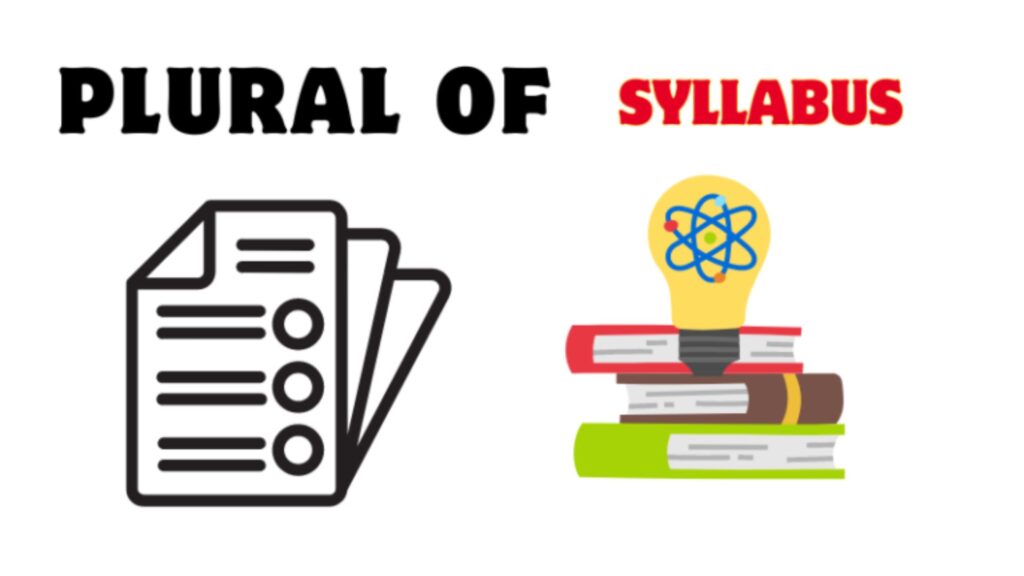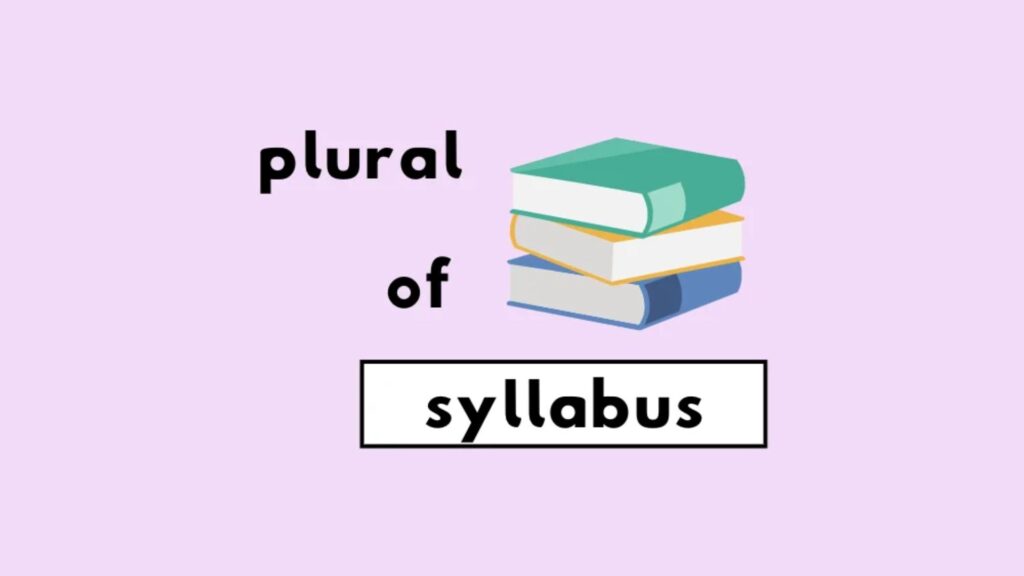Understanding the plural form of syllabus is essential for students, educators, and anyone involved in academic writing. This article explores the nuances of the word, its usage, and practical examples that illustrate its application in various contexts.
The Plural Form of Syllabus

The standard plural of syllabus is syllabi. This term, deriving from Latin, is commonly used in academic settings. However, you might also hear syllabuses in casual conversation. Both forms are acceptable, but syllabi is generally preferred in formal contexts.
Why the Confusion?
The confusion often stems from the transition between Latin and English. Many Latin nouns retain their original plural forms, while others adapt to English rules. For instance, cactus becomes cacti, whereas syllabus follows the pattern of syllabi. This distinction is crucial for understanding irregular nouns in the English language.
Using Syllabi in Context
Let’s explore how to use syllabi and syllabuses through relatable scenarios that highlight their application in communication.
Scenario 1: An Email to Students
Picture yourself as a professor sending an email to your students:
Subject: Course Syllabi for the Upcoming Semester
Dear Students,
I hope you’re all doing well! Attached to this email, you will find the syllabi for the courses I’ll be teaching this semester. Each syllabus includes a summary outline of the course objectives, required readings, and examination requirements.
If you have questions about any of the syllabi, don’t hesitate to reach out. I’m here to assist you!
Best,
Dr. Lisa Thompson
In this email, syllabi emphasizes the formal academic context, ensuring clarity and professionalism.
Scenario 2: A Casual Conversation
Now, let’s consider a casual chat between friends discussing their classes:
Jake: Did you check the syllabuses for our courses yet?
Mia: Yes, I looked them over last night. They seem pretty intense!
Jake: Right? I hope we can keep up with all that reading!
Here, syllabuses feels more relaxed and approachable, fitting perfectly in everyday conversation.
The Importance of Context

Choosing between syllabi and syllabuses often depends on your audience and the context of communication. In professional or academic environments, syllabi adds an air of formality, while syllabuses works well in casual dialogue.
Scenario 3: A Social Media Post
Imagine a professor sharing an update on social media:
Post: Excited to start the new semester! Check out the syllabi for my courses on the university website. Don’t forget to prepare for the first day!
In this case, syllabi is appropriate as the professor addresses a diverse audience, including students and colleagues.
Additional Considerations
While syllabi and syllabuses are the primary forms, knowing your audience can guide your choice. In formal writing, stick with syllabi. In casual communication, feel free to use syllabuses.
Scenario 4: A Group Project Meeting
In a study group, students might discuss their assignments:
Natalie: Have you all looked at the syllabi?
Ben: Yes, I started reading from both. It’s a lot to digest!
Sarah: Let’s split the readings based on our syllabuses to make it easier.
This scenario shows how both forms can coexist in dialogue, depending on the formality of the setting.
Etymology and Study Tips

Understanding the etymology of syllabus adds depth to its usage. The word originates from Late Latin, stemming from a misreading of Greek. Knowing this can enhance your grasp of the term’s significance in academic contexts.
Study Tip
To visualize the use of syllabuses and syllabi, think of collecting them as you would gather different lesson plans or curricula. This technique can help solidify your understanding of plural forms.
Conclusion
In summary, grasping the plural of syllabus whether syllabi or syllabuses is vital for effective communication in educational settings. By considering your audience and context, you can choose the appropriate form to convey your message clearly.
Final Thoughts
Language serves as a bridge for connection, and mastering its intricacies can enhance your interactions. Embrace the quirks of English, and don’t hesitate to experiment with your word choices. Effective communication is about clarity and relatability, so keep practicing!

